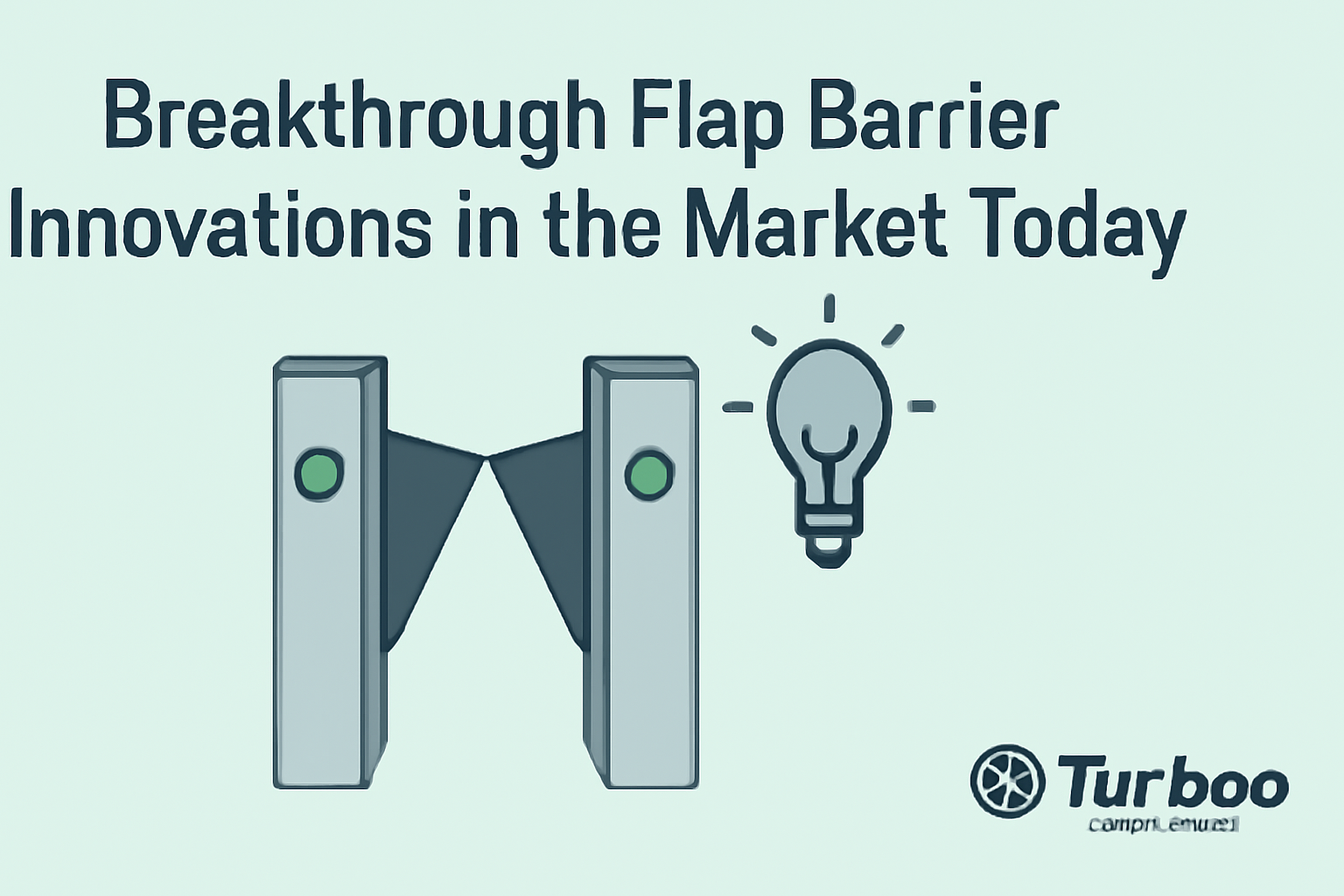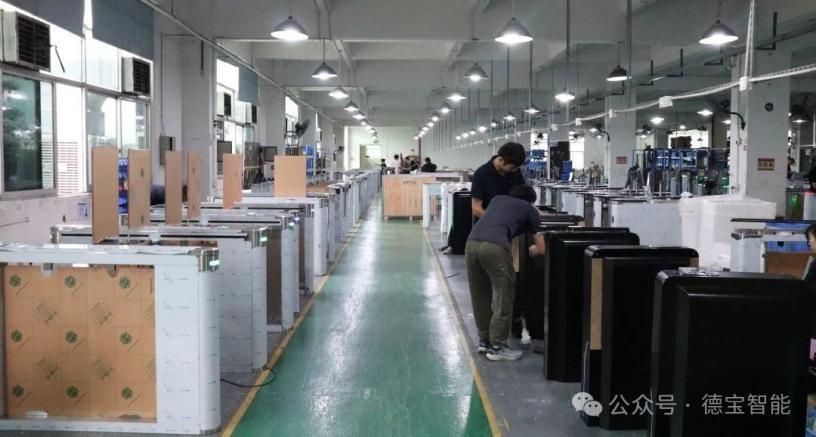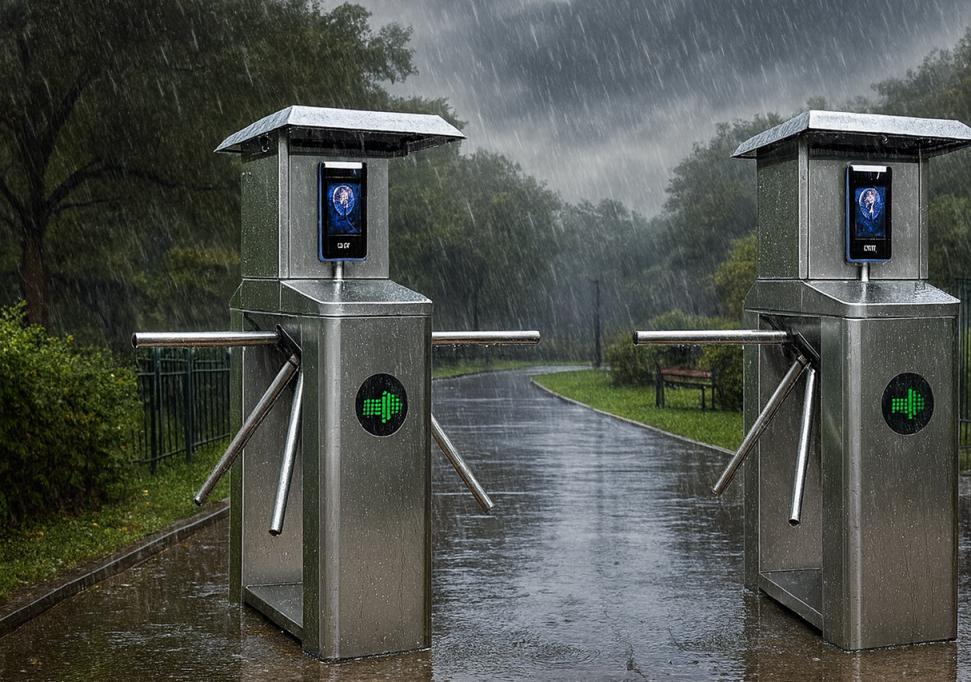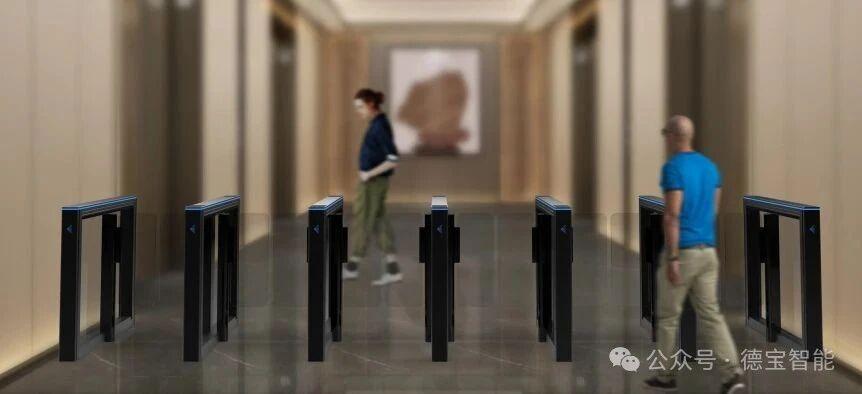Breakthrough Flap Barrier Innovations in the Market Today


Over the past few years, access control systems have undergone a significant transformation. What used to be simple gates and turnstiles have now evolved into sophisticated, high-tech solutions designed to meet the increasing demands of security, efficiency, and user convenience. Flap barriers, once a standard feature for controlling access in busy facilities, now boast cutting-edge features that were once thought impossible.
Whether you’re managing a high-traffic building, a secure facility, or a modern office complex, understanding the latest flap barrier innovations is critical. These technologies not only improve security but also optimize operational efficiency, reduce maintenance costs, and enhance user experience. As new technologies are constantly emerging, staying updated is key to staying ahead in today’s competitive market.
This article will reveal the breakthrough flap barrier innovations currently shaping the market, including AI-assisted controls, energy-saving motors, advanced sensors, biometric integrations, and cloud-based management systems. Let’s dive into these exciting developments and explore how they can benefit your facility.
The Importance of Staying Updated on Flap Barrier Innovations
Keeping up with the latest flap barrier innovations is essential for facility managers, security planners, and procurement teams. As technology continues to advance, the expectations for access control systems are evolving. No longer are facilities limited to basic security features; they now demand more sophisticated solutions that provide higher levels of security, efficiency, and convenience.
Staying informed about these innovations is crucial for several reasons:
- Improved Security: Cutting-edge features provide enhanced protection against unauthorized access, making it harder for potential intruders to bypass the system.
- Enhanced User Experience: Modern systems, such as biometric integrations and AI-assisted controls, streamline entry processes, speeding up access without compromising security.
- Operational Efficiency: New technologies like cloud-based management and energy-saving motors can reduce costs and ease maintenance, making your facility’s operations more efficient.
- Long-Term Investment: Understanding these innovations helps you make informed purchasing decisions, ensuring that your investment in flap barriers provides long-term value and meets future needs.
Incorporating the latest flap barrier innovations can elevate the functionality of your facility’s security, offering a seamless, efficient, and future-proof solution.
For a deeper dive into the specifics of innovative flap barrier technologies, check out our flap barrier innovation page.
AI-Assisted Barrier Controls: Revolutionizing Security and User Experience
Artificial intelligence (AI) is transforming industries across the board, and access control is no exception. AI-assisted barrier controls are the latest innovation in flap barriers, providing smarter, more adaptive solutions that improve both security and user experience.
How AI is Changing Flap Barrier Systems
AI-powered systems allow flap barriers to learn and adapt to different access patterns. They can detect anomalies in user behavior, identify tailgating attempts, and make decisions in real-time, without relying on pre-programmed instructions. AI also enhances system diagnostics, helping security teams detect potential problems before they occur and reduce maintenance efforts.
AI-Driven Benefits
- Improved Security: AI can detect irregularities such as unauthorized access attempts or tailgating and automatically adjust barrier behavior to prevent breaches.
- Enhanced User Flow: AI optimizes barrier operation by adjusting speed based on foot traffic, allowing for faster entry during peak hours without sacrificing security.
- Advanced Monitoring: AI can integrate with video surveillance systems, enhancing the ability to identify individuals in real-time and cross-reference with security data.
AI-driven flap barrier systems not only improve security but also contribute to smoother and faster access control, making them ideal for high-traffic areas.
Energy-Saving Motors: Boosting Efficiency and Reducing Operational Costs
In an era of sustainability, energy-efficient technologies are more important than ever. Flap barrier systems with energy-saving motors are helping facilities reduce their operational costs while supporting eco-friendly initiatives.
The Role of Energy-Saving Motors
Energy-efficient motors in flap barriers consume less power, especially during idle periods. These motors are designed to operate with minimal energy, providing the same reliable performance while reducing the energy footprint of the system.
Key Benefits
- Cost Reduction: Lower power consumption directly translates to reduced electricity costs, which can significantly lower a facility’s overall operational expenses.
- Sustainability: Energy-saving motors help facilities meet their sustainability goals by reducing carbon emissions.
- Long-Term Savings: Though energy-efficient systems may have a higher initial cost, they pay for themselves over time through savings on energy bills and lower maintenance needs.
Facilities looking to reduce their environmental impact and lower costs should consider energy-saving flap barrier systems as a long-term solution.
Advanced Safety Sensors: Enhancing User Protection and System Responsiveness
Safety is paramount when it comes to access control systems, especially in busy environments. Advanced safety sensors in flap barriers help prevent accidents, protect users, and ensure the system operates safely and efficiently.
Types of Safety Sensors
- Infrared Sensors: These sensors detect the presence of individuals by emitting and receiving infrared light, preventing the barriers from closing on users.
- Ultrasonic Sensors: These sensors use sound waves to detect objects in the barrier’s path, offering highly accurate detection in various environmental conditions.
- Capacitive Sensors: Capacitive sensors detect the presence of a person by measuring changes in the electrical field, providing another layer of safety.
Benefits of Advanced Sensors
- User Protection: These sensors reduce the risk of accidents, such as injury from the barrier closing unexpectedly.
- System Reliability: They ensure the flap barrier only operates when it’s safe, preventing malfunction-related issues.
- Improved Efficiency: Sensors increase the overall efficiency of the system by allowing for seamless, uninterrupted operation.
Flap barriers with advanced safety sensors can significantly improve the overall safety of your facility while ensuring smooth and efficient operation.
Biometric Integrations: Elevating Security with Cutting-Edge Authentication
Biometric technology is making its way into flap barrier systems, providing an advanced, secure method of authentication. Whether it’s fingerprint recognition, facial scanning, or iris recognition, biometric systems offer an additional layer of security beyond traditional access cards or PINs.
How Biometric Integration Works
Biometric integrations scan unique user traits—such as fingerprints, facial features, or the iris—to grant access. This eliminates the need for physical cards, reducing the risk of stolen or lost credentials.
Benefits of Biometric Integration
- Enhanced Security: Biometric features offer a higher level of security by ensuring that only authorized individuals can access restricted areas.
- Convenience: With biometric authentication, users don’t need to carry cards or remember PINs, making access smoother and faster.
- Non-Transferable Access: Since biometric traits are unique to each individual, the risk of unauthorized access is significantly reduced.
Biometric-enabled flap barriers provide both convenience and top-notch security for facilities that require high levels of protection.
Cloud-Based Management Systems: Streamlining Monitoring and Control
The advent of cloud computing has made a significant impact on a variety of industries, and access control systems are no exception. Cloud-based management for flap barriers is one of the most powerful innovations in the market today, allowing for remote monitoring, real-time control, and data analytics—all from a centralized platform.
How Cloud-Based Management Works
Cloud-based management systems allow facility managers to access and control their flap barrier systems via the internet. This means that, regardless of where they are located, they can monitor system performance, review data, and make changes to settings without needing to be physically present at the access points.
Key Benefits of Cloud-Based Management Systems
- Remote Monitoring: Facility managers can monitor barrier performance, identify issues, and resolve problems without needing to be on-site. This is especially beneficial for large facilities with multiple entrances.
- Real-Time Data: Cloud-based systems provide real-time analytics on traffic flow, usage patterns, and operational health. This data can be used to optimize barrier performance and anticipate maintenance needs.
- Automatic Software Updates: Cloud-managed systems often feature automatic software and firmware updates, reducing the burden on IT teams and ensuring the system stays up-to-date with the latest security features and bug fixes.
- Scalability: As facilities grow, cloud-based systems can easily be expanded to include additional barriers, new features, and integrated security solutions, all without requiring a complete system overhaul.
With the ability to access, monitor, and control your flap barrier system from virtually anywhere, cloud-based management provides facility managers with unparalleled convenience and flexibility. These systems also improve operational efficiency by streamlining monitoring and maintenance tasks.
For more information on how cloud-based management is transforming access control, explore the latest trends on flap barrier trends for 2025.
Integration with Smart Building Systems: Achieving Seamless Security Solutions
As smart building technology continues to grow, so does the need for integrated systems that can communicate with one another. Flap barriers are increasingly being integrated with broader smart building systems, such as building management systems (BMS), video surveillance, and advanced access control platforms, creating a seamless security environment that enhances both safety and efficiency.
The Role of Flap Barriers in Smart Building Integration
Flap barriers that are part of a smart building ecosystem can interact with other security measures, such as motion sensors, alarms, and surveillance cameras, to create a cohesive and dynamic security solution. For instance, if a security camera detects suspicious activity near a barrier, the flap barrier system can automatically adjust, either to lock the barrier or increase monitoring.
Benefits of Integration
- Centralized Control: Integrated systems allow facility managers to control all aspects of building security from a single platform. This reduces complexity and improves response times in the event of an incident.
- Automated Operations: By integrating flap barriers with other building systems, security can become automated. For example, a person’s entry credentials might automatically trigger the opening of not just a flap barrier but also the building’s heating or lighting systems.
- Enhanced User Experience: Seamless integration ensures that the user experience is smooth and efficient, with no need to manually operate different security devices or systems. This also reduces human error and ensures security is always at optimal levels.
Facilities that integrate flap barriers with their larger smart building systems will benefit from increased operational efficiency, better resource management, and enhanced security protocols. The integration also future-proofs the facility, as technology continues to evolve.
For more on integration trends, see HID Global’s access control solutions, which are leading the way in smart building integration.
Future Flap Barrier Tech: What’s Coming Next?
As technology continues to advance, the future of flap barriers looks incredibly promising. From advanced AI to more sophisticated biometric options, the next generation of flap barrier systems will provide even more security, efficiency, and convenience for facility managers.
Emerging Technologies on the Horizon
- 5G Connectivity: The roll-out of 5G technology will allow for faster communication between devices, potentially reducing latency and increasing the real-time responsiveness of flap barriers.
- Advanced AI and Machine Learning: Future flap barriers will integrate even more advanced AI that can predict traffic patterns, optimize barrier speed based on user behavior, and detect more sophisticated security threats.
- Autonomous Features: Imagine flap barriers that can make independent decisions based on their environment. These systems will automatically adjust their settings based on weather conditions, crowd density, or real-time security alerts, without requiring human intervention.
- Next-Generation Biometric Authentication: Future biometric integrations may include more advanced and accurate technologies, such as vein recognition or DNA-based systems, providing even more secure access control options.
Impact of Future Tech
The upcoming innovations in flap barrier technology will lead to smarter, more efficient systems that require less maintenance, provide enhanced security, and integrate more seamlessly with other building technologies. These advancements will also provide better data analytics, allowing for smarter facility management and more informed decision-making.
Facility managers should keep an eye on these emerging trends and consider how they can integrate future-proof systems into their access control strategies. For more insights into future technologies, refer to future flap barrier tech.
Conclusion
The flap barrier market has experienced remarkable advancements in recent years, driven by cutting-edge innovations that have transformed how facilities manage access control. From AI-assisted controls and energy-saving motors to advanced biometric integrations and cloud-based management systems, these breakthrough technologies offer real-world benefits, including enhanced security, improved user experience, and reduced operational costs.
By staying updated on the latest flap barrier innovations, facility managers and procurement teams can make informed decisions that not only improve safety and security but also optimize operational efficiency. Embracing these technologies ensures that your facility remains at the forefront of access control, adapting to evolving demands and securing long-term value.
As the flap barrier market continues to evolve, facilities should look for systems that incorporate these breakthrough innovations and prepare for the technologies of tomorrow. By doing so, you ensure your building stays secure, efficient, and ahead of the curve.












